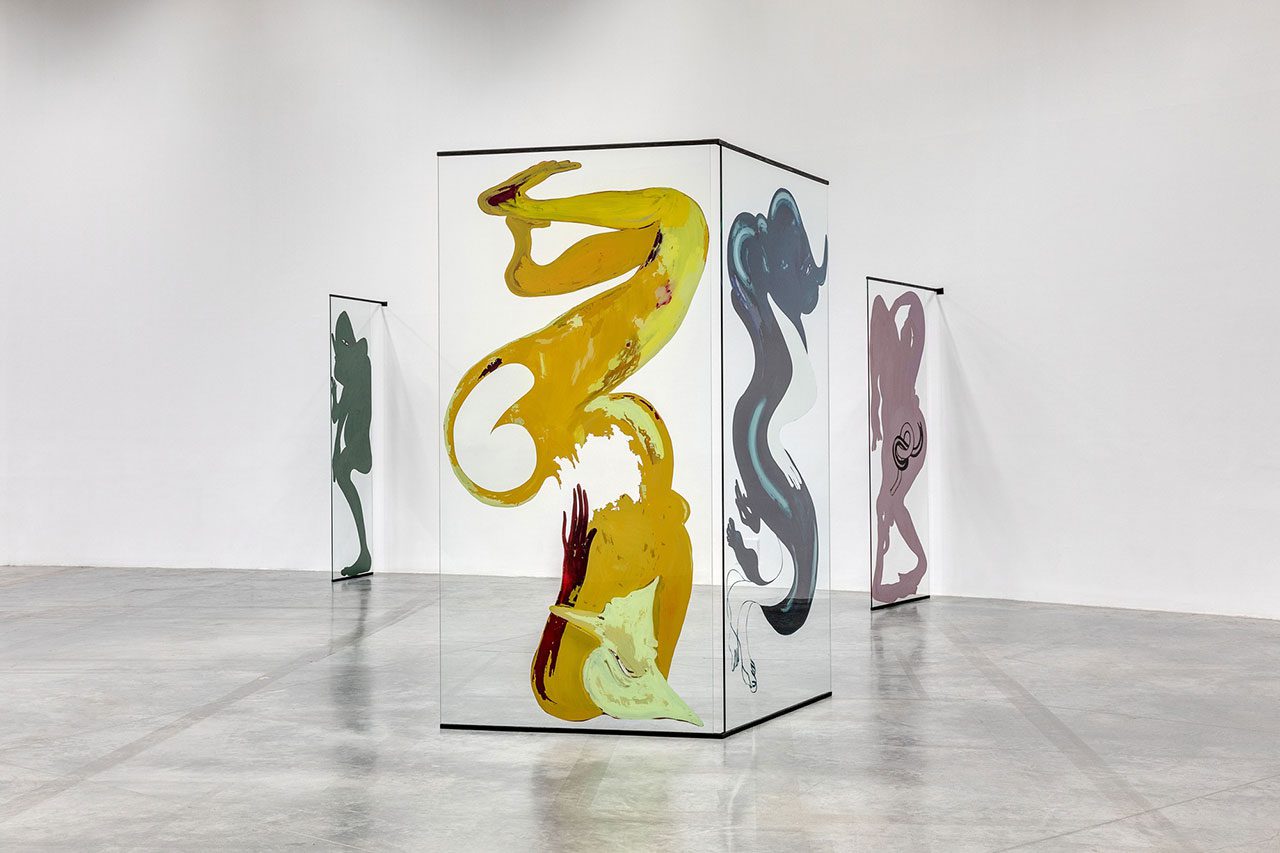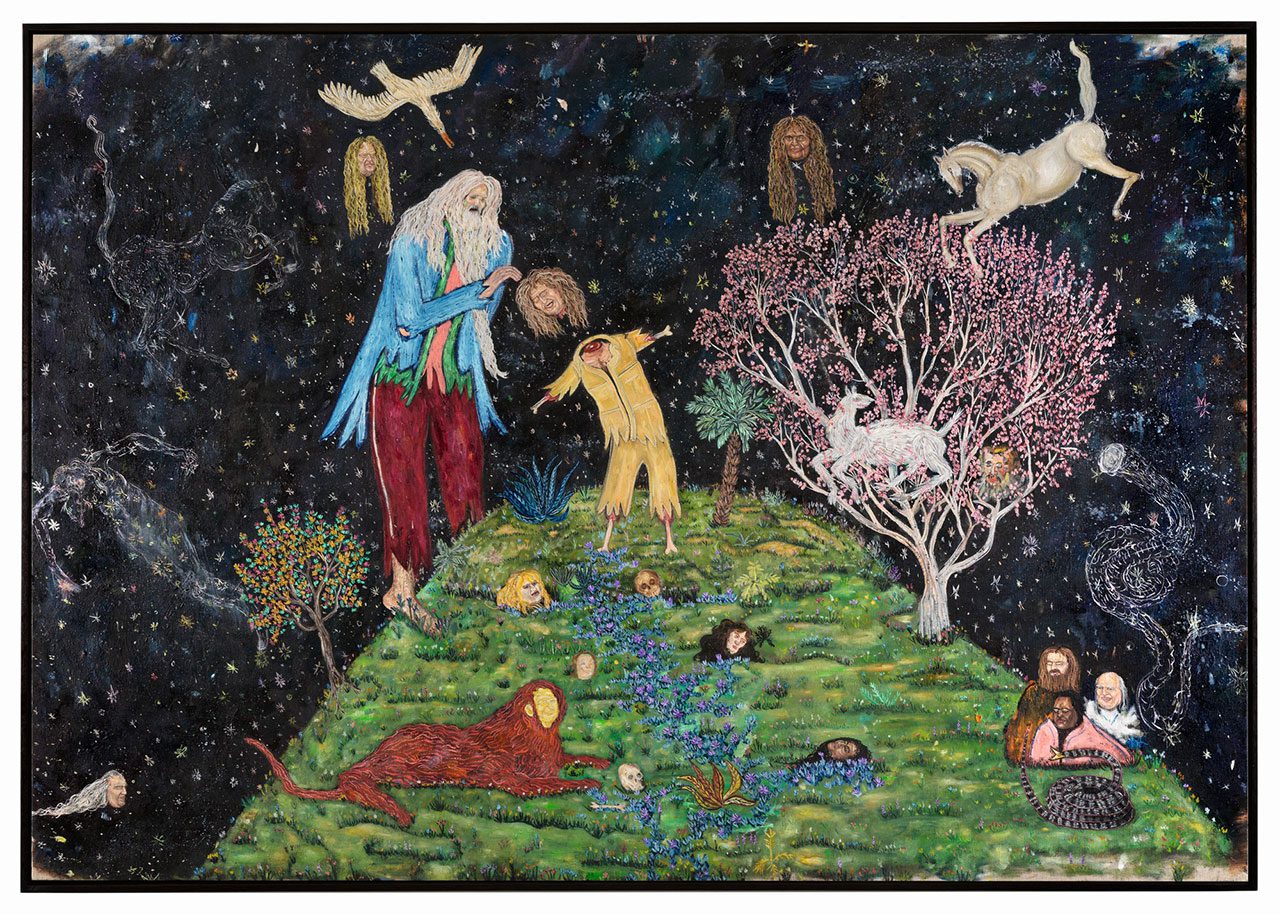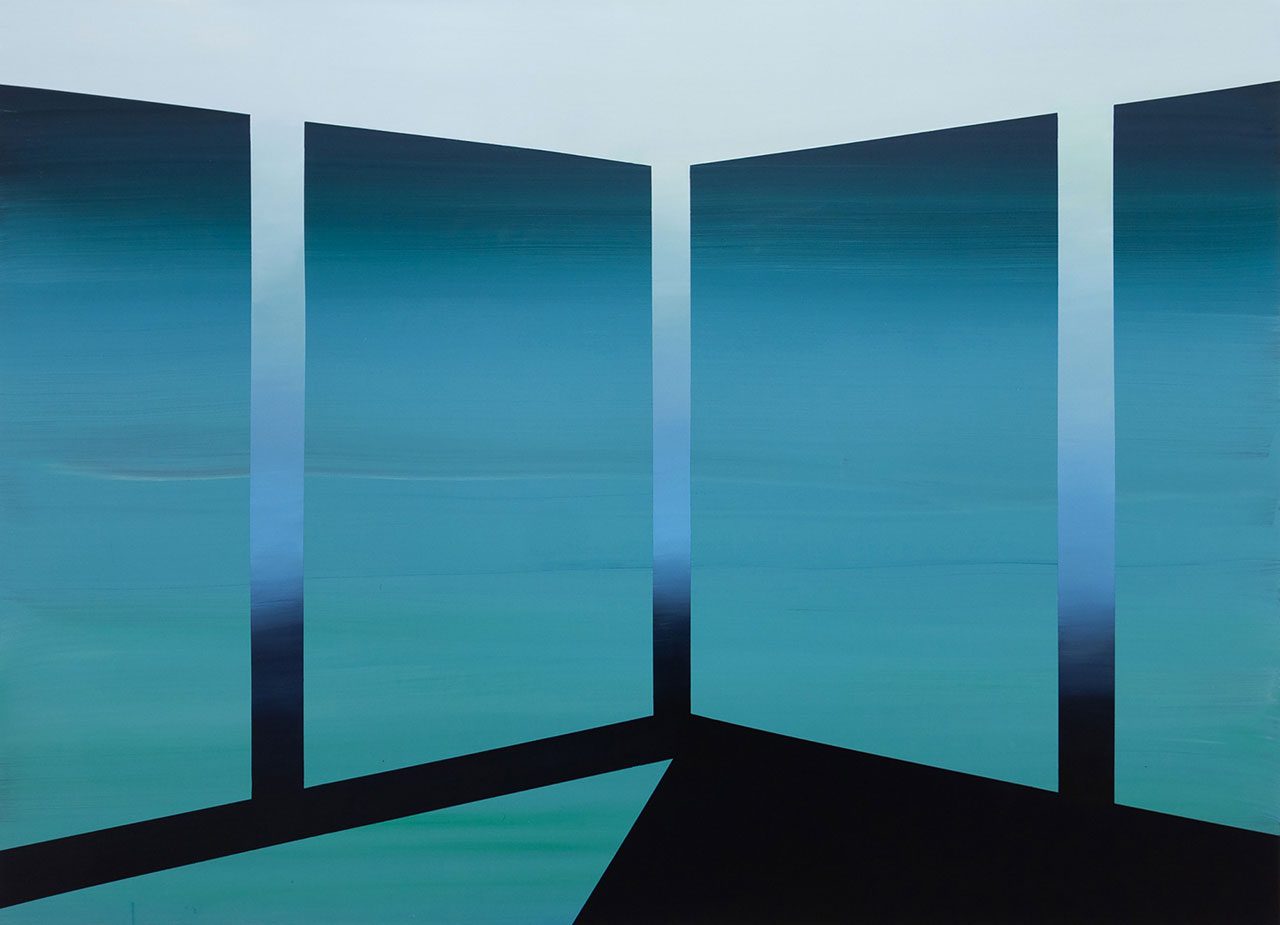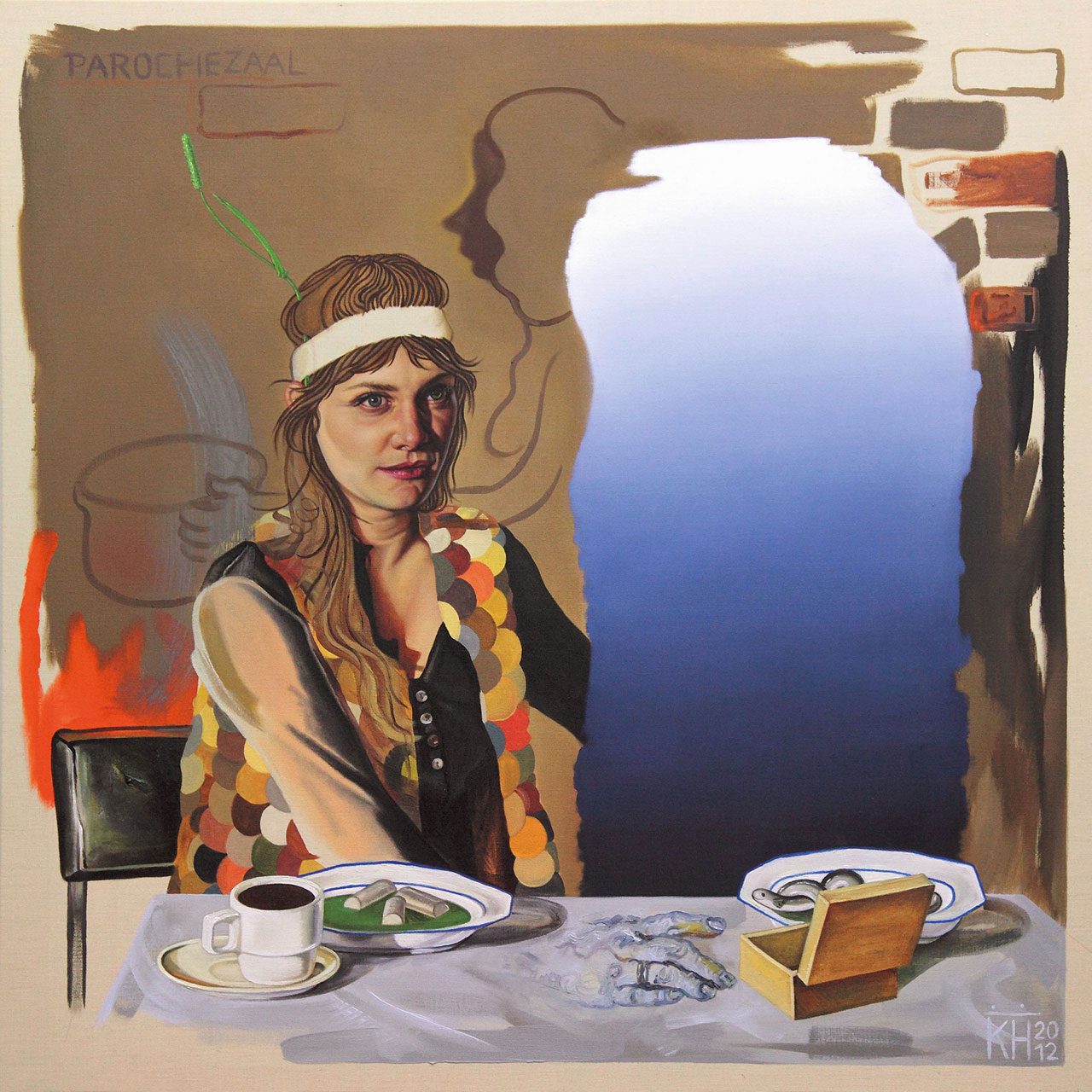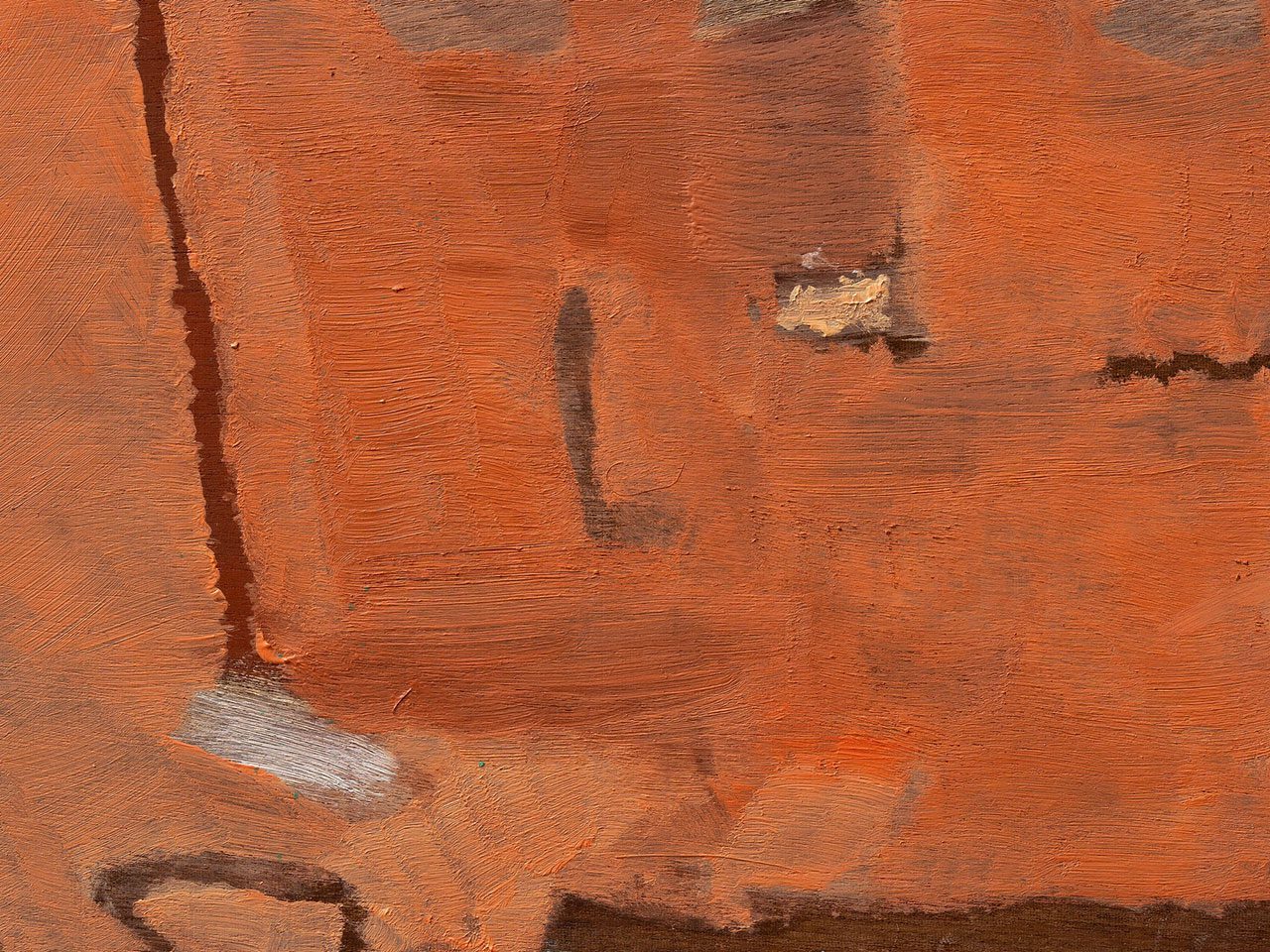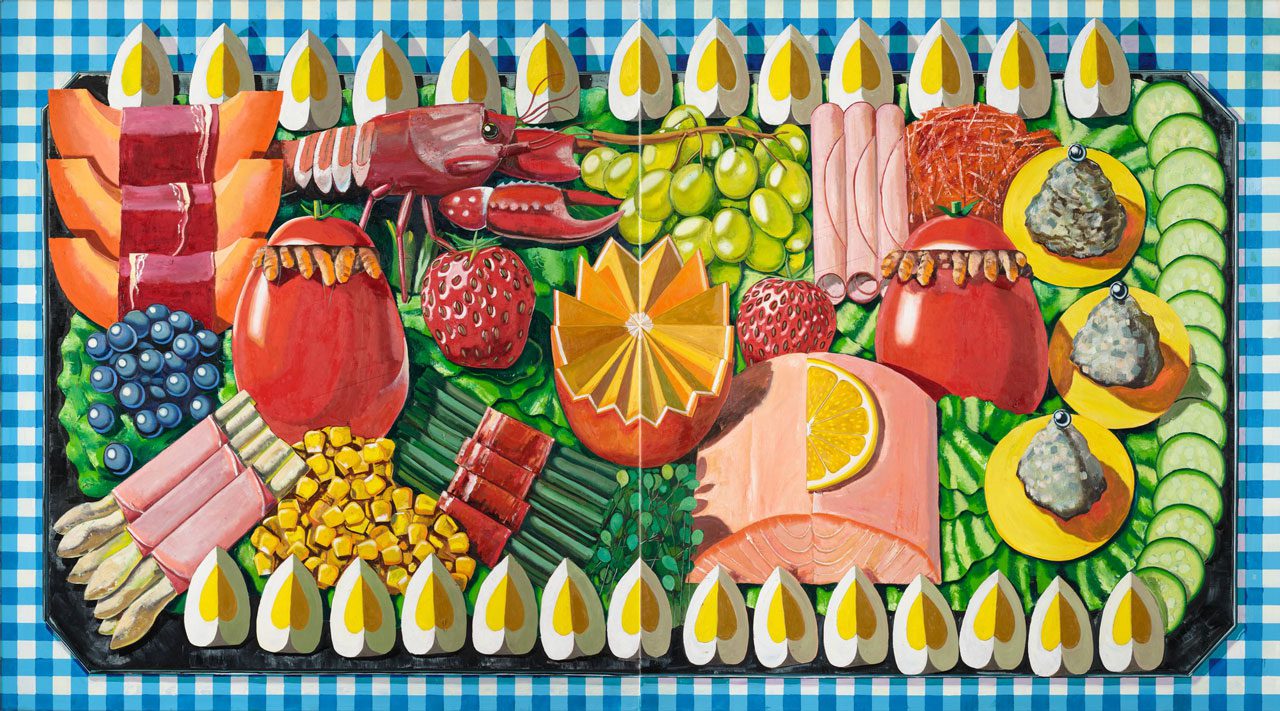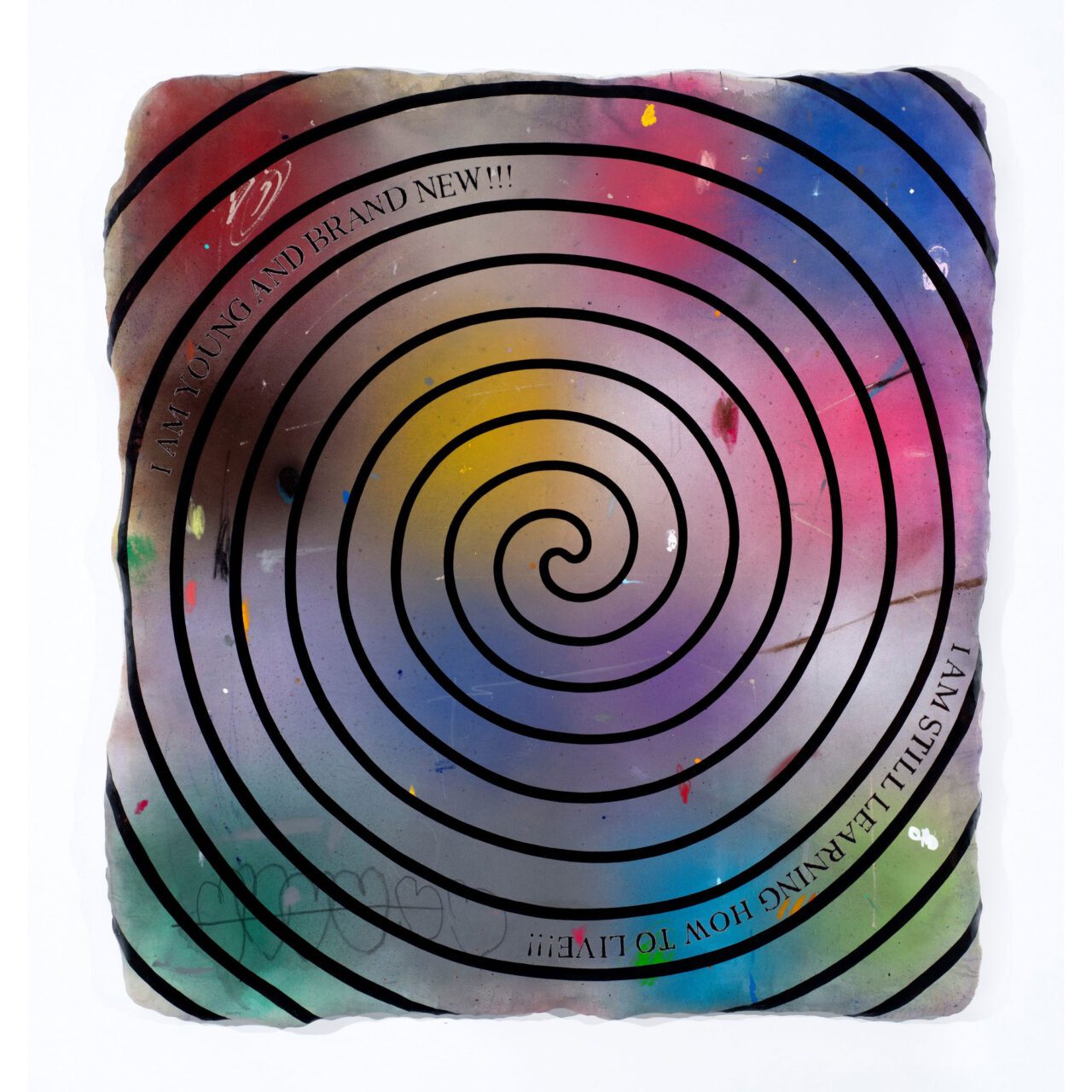PRESENTATION:Painting After Painting
Despite the many claims of its death, painting remains a thriving art form. Artists today draw on the motifs and techniques of the past, but equally explore and push the boundaries of the discipline. Some create narrative works addressing their daily lives, political and social issues, or questions of identity, gender and representation. Others adopt a more abstract or formalist language and explore the relationship with other contemporary image-making forms.
By Efi Michalarou
Photo: S.M.A.K. Archive
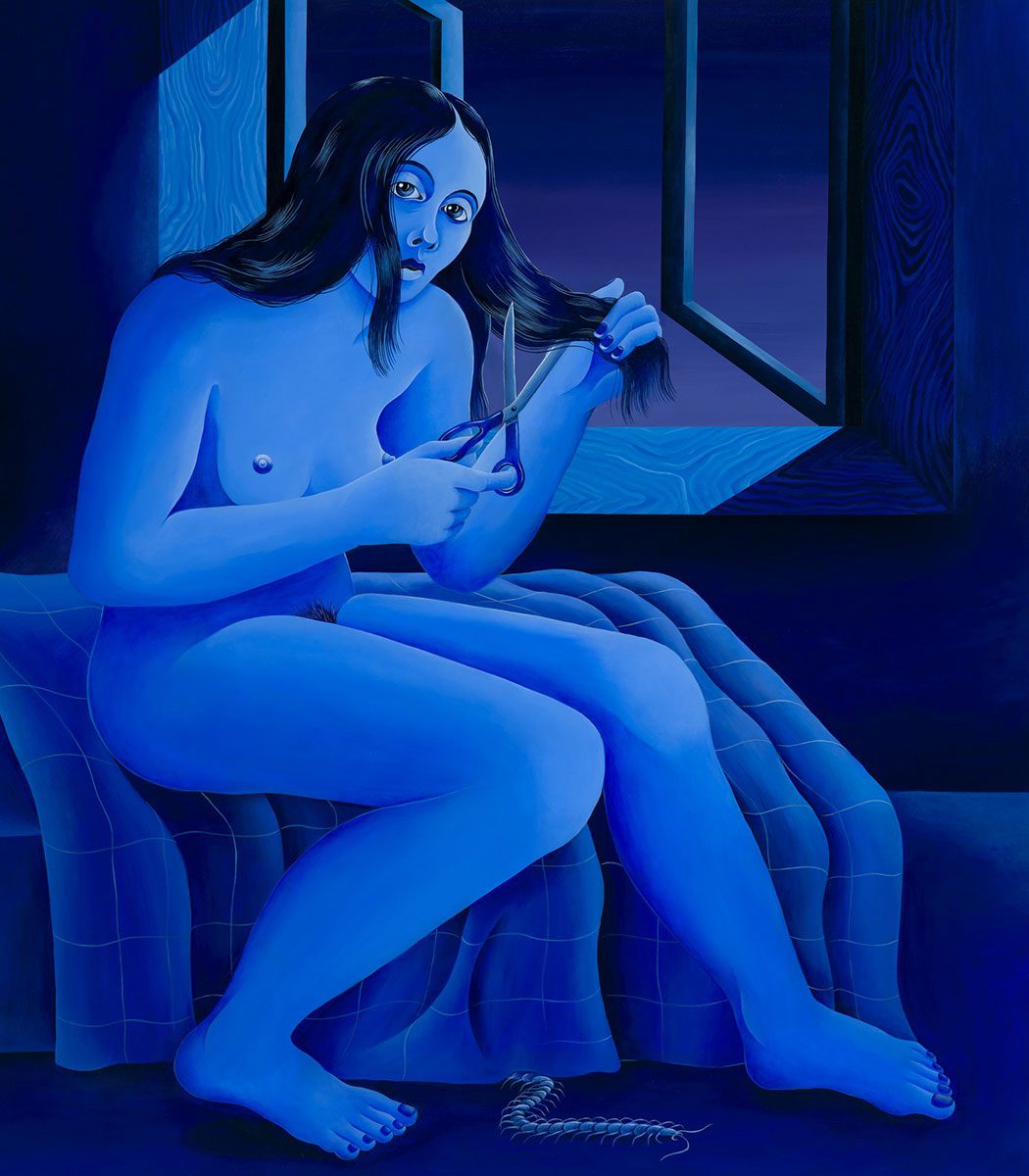
Without striving for completeness, this exhibition “Painting After Painting” attempts to outline the recent developments and trends in the medium, with a focus on the Belgian milieu in particular. Celebrating the depth and complexity of the medium painting, the exhibition showcases the work of seventy-three contemporary painters born after 1970, living and working in Belgium. Without striving for completeness, S.M.A.K. attempts to outline the recent developments and trends in the medium. Artists today draw on the motifs and techniques of the past, but equally explore and push the boundaries of the discipline. Some create narrative works addressing their daily lives, political and social issues, or questions of identity, gender and representation. Others adopt a more abstract or formalist language and explore the relationship with other contemporary image-making forms. Among them: Adam Leech is fascinated by the dialectic between neurology on the one hand and sensory, subjective experiences in the arts on the other hand. For instance, during a residency at S.M.A.K. in 2021, he explored the ambiguity between knowledge and immeasurability of aesthetic experiences. Sensory experience, psychological processes and neurology fascinate Adam Leech by their elusiveness, and it is exactly that which he tries to capture in his paintings. His work translates the search of the intangible through an innovative use of materials. In recent developments, Adam Leech experiments with sculptural elements on a two-dimensional canvas. He uses figurative portraits as well as abstractions of images to depict that indeterminacy with different shapes, textures, and materials. Van Boxelaere works in direct relation to her surroundings: the physical, pre-eminently urban, landscape, and the mental one. Due to the sometimes-rigid administration that governs both areas, she discerns a certain detachment. In the hermetic system of everyday life, no one feels at home anymore; escaping from the restless noise, from the “laws and practical encumbrances”, is almost impossible. Mesmerized, Van Boxelaere observes the schizophrenic social systems and oppressive developments in densely populated, densely built Belgium. In her deeply felt canvases, she fillets the insane grid that was supposedly constructed to provide something to hold on to, but that turns out to be a submission hold. Sometimes she breaks open that oppressive framework, sometimes she cleans the rubble of the passing storm. In Aurélie Gravas’ work, figuration is in fact an invitation to enter the sublime world of painting: the sureness of the line, which asserts itself in full, or is suggested by the caress of the pigment, colors that seem to sing to each other, curves that punctuate or languish the forms, reliefs powerfully suggested by a subtle work of transparency where the grain of the canvas flushes out, and where evanescent forms are superimposed. The contemplation of Aurélie Gravas’s works continually oscillates between the pleasure of seeing the purity of a profile, which satisfies our insatiable quest for meaning, and that of abandoning our eyes to the play of curves and colors. Bart Stolle is developing a complex body of work that consists mainly of paintings, drawings and animated films. He accommodates his works under the name ‘Low Fixed Media Show’, which functions both as an advertising agency for his practice and as an alternative entertainment company. His works reveal a strong interest in computer language, science, space travel and artificial intelligence. And yet he does not use the latest technologies or media to create his works, preferring instead manual, more labor-intensive techniques. He carefully constructs his paintings according to certain rules that he imposes on himself: a black surface, for example, can never be painted directly on a blue background. Every action is like a precise move in a game of chess.
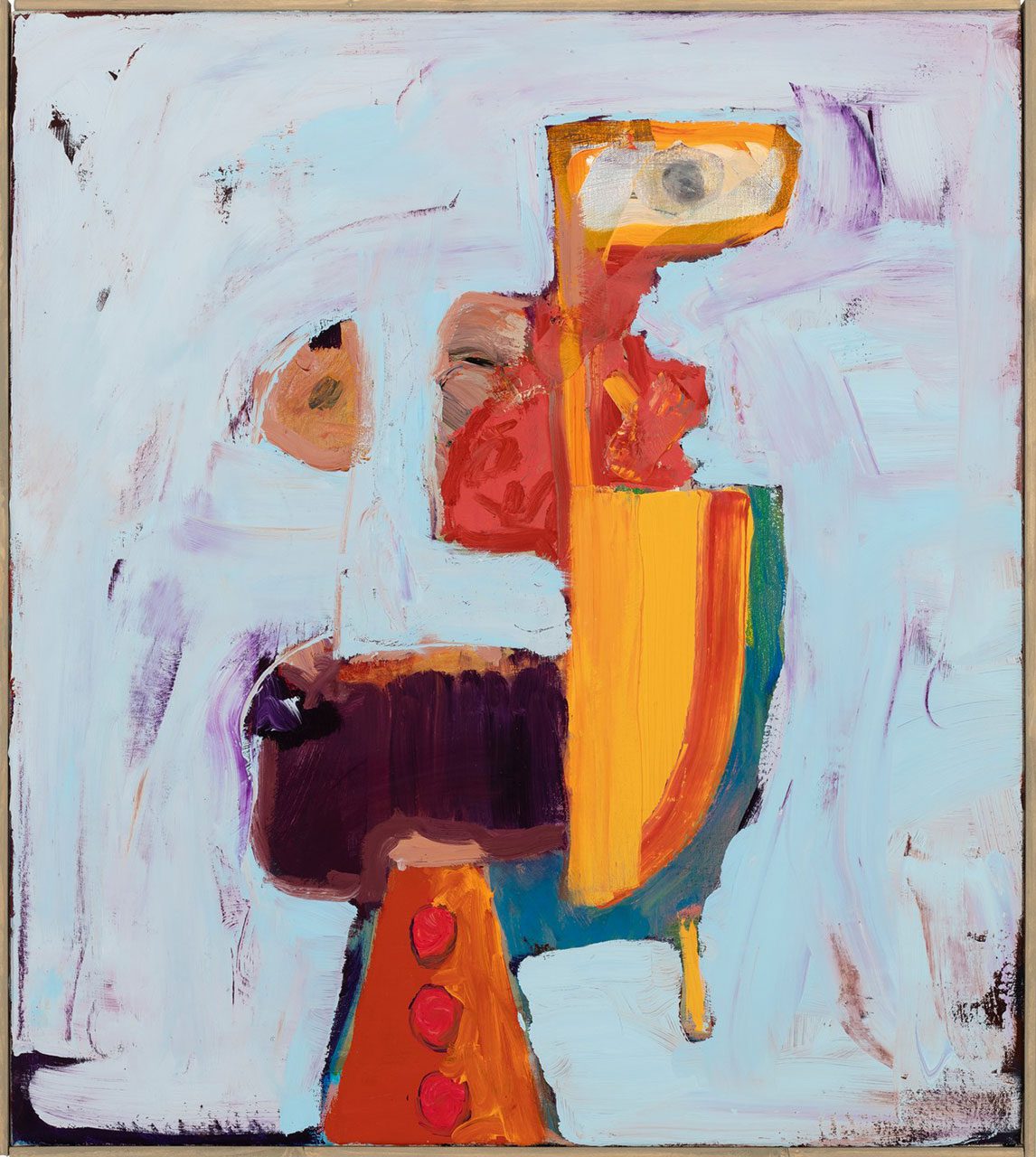
Kati Heck is known for her lucid yet enigmatic paintings, in which realism is transformed from a representational category into a fluid process. Her compositions branch into multiple genres – with literature, art history, folklore and lived experience forming simultaneous and indivisible strands. Her practice also incorporates sculpture, film, performance and photography. In Carlotta Bailly-Borg’s works there are numerous influences and references from art history, mythology, sports and pop culture just to name a few. She abstracts elements, transforms and reassembles them in fictional worlds. Her anthropomorphic forms encounter each other on different stages, relate to each other, and catalyze a driving energy in the interweaving of their cultural roots. She incorporates a high variety of different media – such as drawing to painting on canvas, ceramics, fresco or painting under glass – without allowing hierarchies to emerge. The organic lines and curves seem to flow and are reminiscent of Persian calligraphy. They seem to allow her figures to be composed both of ephemeral and rigid forms and are woven into dense compositions that elevate the whole to more than the sum of its parts. The works invite us to think in terms of connections, interweaving, intricacies, and entanglements. Bram Demunter is an artist whose work thrives on the rich interplay between myth, history, and personal narrative. One of the striking features of Demunter’s paintings is his ability to use visual motifs to bridge disparate worlds. Figures from classical myth, like gods, heroes, and monsters, may emerge from or interact with the symbols of contemporary life. This dynamic tension creates a sense of dialogue between different epochs and experiences, questioning the linearity of history and offering instead a more fluid, interconnected understanding of human experience. The brushstrokes themselves seem to mirror this complexity. Rich textures and vibrant colors swirl together, creating a sense of movement and energy that suggests both the tumult of ancient battles and the quiet moments of personal introspection In Tina Gillen’s paintings, the subject depicted is often reduced to its simplest elements. Her works present figurative worlds counterbalanced by abstract forms and the back-and-forth movement between these two dimensions wisely balances the great mastery of the pictorial vocabulary and a certain ‘letting go’ in the execution, a certain rigor in the composition and a more intuitive approach. Both surface and space compete for the viewer’s attention, resulting in a complex confusion, a charged atmosphere. The linear perspective appears abolished and the perception unsettled. The point of departure for her paintings is usually located in photographs stemming from various contexts – magazines, the Internet, postcards, etc. – which Gillen subjects to a process of reduction and abstraction. Dense with materials, paint, art history, and anomalies, the paintings of Jannis Marwitz have a precision that would not exist without the intensive drawing work he conducts in parallel. Executed in ink, his sketches recall the preliminary sheets produced by classical painters. They show anatomical sections of a horse’s head, of the head of a cow along with other horse studies, and of a dog, to which a tree motif and several figures have been added. In contrast to his paintings, Marwitz’s drawings do not follow any clearly discernible composition; instead, the motifs appear alongside each other, pushed together from various directions and spreading out across the entire surface of the paper. The effect is striking; one might think these sketches come from the seventeenth century. This stylistic anachronism should not be taken too seriously, however. For if it speaks of a love of a precise depiction of the world, it also reflects a desire to convey the simultaneity of time in the era of the endless reproduction and distribution of images.
Participating Artists: Charlotte Vandenbroucke, Libasse Ka, Hadassah Emmerich, Tatjana Gerhard, Lisa Vlaemminck, Charline Tyberghein, Lysandre Begijn, Marie Zolamian, Veerle Beckers, Matthieu Ronsse, Bart Stolle, Sarah Smolders, Shirley Villavicencio Pizango, Nelleke Cloosterman, Vedran Kopljar (& parents), Thom Trojanowski, Kati Heck, Anne Van Boxelaere, Antoine Goossens, Frederik Lizen, Bram Demunter, Stijn Cole, Nel Aerts, William Ludwig Lutgens, Carole Vanderlinden, Tina Gillen, Joëlle Dubois, Vincent Geyskens, Felix De Clercq, Dieter Durinck, Kristof Santy, Michaël Van den Abeele, Anastasia Bay, Karel Thienpont, Melissa Gordon, Emmanuelle Quertain, Carlotta Bailly-Borg, Jannis Marwitz, Michiel Ceulers, Victoria Palacios, Leen Voet, Monika Stricker, Anna Zacharoff, Gijs Milius, Che Go Eun, Hannah De Corte, Sanam Khatibi, Nokukhanya Langa, Henrik Olai Kaarstein, Natasja Mabesoone, Julien Meert, Aurélie Gravas, Pieter Vermeersch, Jonas Dehnen, Samuel Hindolo, Loïc Van Zeebroek, Helmut Stallaerts, Adam Leech, Louise Delanghe, Brieuc Dufour, Yann Freichels, Anthony Ngoya, Nina Gross, Jérôme Degive & Manuel Falcata, Koen van den Broek, Mae Dessauvage, Ben Sledsens, Julien Saudubray, Diego Herman, Pieter Jennes, Nelson Louis, Luís Lázaro Matos and Bendt Eyckermans
Photo: Nokukhanya Langa, I’ve been around for millennia, 2024. Oil and mixed media on canvas, 200 x 190 cm. Courtesy of Nokukhanya Langa and Saatchi Yates, Photo credit to Justin Piperger
Info: Curators: Tanja Boon, Ann Hoste, Sam Steverlynck, Philippe Van Cauteren, and Liesje Vandenbroeck, S.M.A.K. ( Stedelijk voor Actuele Kunst), Jan Hoetplein 1, Gent, Belgium, Duration: 4/4-2/11/2025, Days & Hours: Tue-Fri 9:30-17:30, Sat-Sun 10:00-18:00, https://smak.be/
